Five Wild Isles wetland superstars to spot at WWT sites
Majestic. Exciting. Breath-taking. BBC Wild Isles has enthralled us all with its stunning look into the incredible wildlife that calls the UK home.
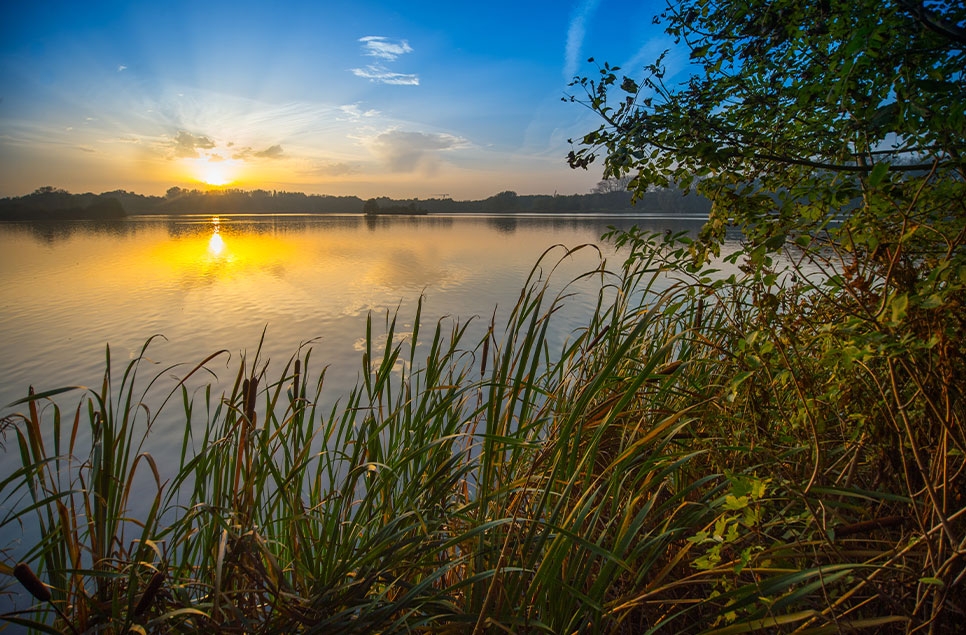
No matter how long you have been interested in wildlife, every week we’ve seen a new perspective on iconic species that are vital to our national identity.
At our sites you can get up close with some of the amazing wetland wildlife we've enjoyed throughout the Wild Isles series. Whilst your visit won't come with Sir David Attenborough narration you can immerse yourself in the incredible soundscape of nature at it’s realest.
Kingfishers
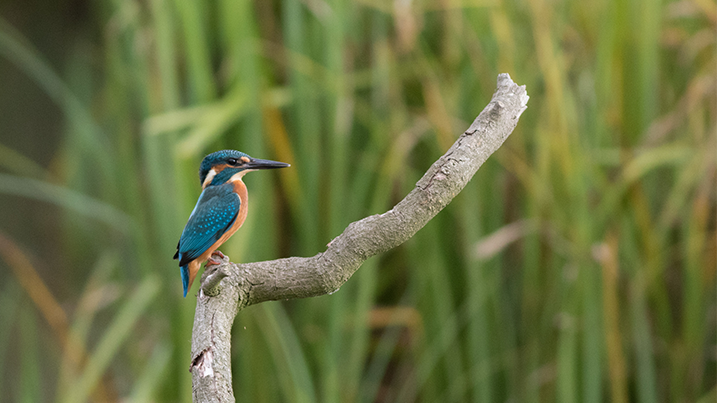
The colourful royal icon of UK wildlife, beloved by first time nature explorers, long time nature enthusiasts and everyone in between, kingfishers leave a lasting impression on anyone lucky enough to spot them.
Kingfishers striking plumage belies how well they can remain hidden amongst reedbeds and river side shrubs, with most views being the distinctive flash of electric blue whizzing along rivers just above the water line. These fleeting glimpses portray kingfishers as manic excitable birds dashing from shelter to shelter betraying their true nature as one of the most patient species you will ever see.
To see them at their majestic best, visit our reedbed hides and look for perfect perching sticks from which these blue beauties can demonstrate how they got their name. With a bit of luck, you’ll see kingfishers fly to one of these perches to scope out what could be on the menu for today, using the high vantage point to get the perfect view into the water below. While the kingfisher waits patiently to pick the perfect moment, you’ll be able to take in the striking colours of their feathers, unlike anything else you’ll see in UK nature. In these moments you’ll feel the poise and balance they command whilst resisting any wind to hold their heads perfectly still. Then in a burst of energy and drama, they drop from their viewpoint, crashing beneath the surface before rising again: a picture of calm and victory amongst the calamity of disturbed water. Patience rewarded for kingfisher and you alike.
Toads
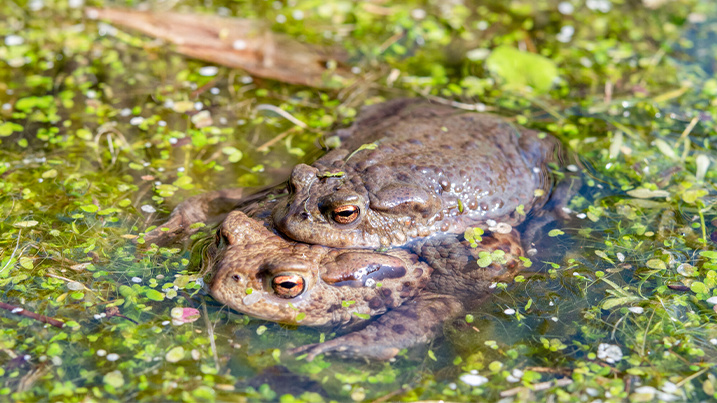
Rough, warty skinned, clumsy moving, toads are some of the most underrated animals that call these shores home. With a fascinating life cycle, an intriguing way of getting around and an ingenious defence mechanism, toad encounters shouldn’t be overlooked.
Unusually for amphibians, toads tend to spend most of their time out of water, and even overwinter burrowed into mud and leaf litter. As spring breaks, they will emerge en masse from their winter abodes to make their way to local ponds. Particularly on rainy mornings you can see them walking with their awkward gait across paths preferring a more sedate travel option to the energetic hopping of frogs. By avoiding fast sudden movements you can get quite close to these loveable, grumpy looking amphibians. But don’t disturb them too much, toads really just want to be left alone, puffing up to make themselves seem large when threatened and secreting an irritant substance to put off any predator that might attempt to make a meal of them.
A little later in the season the best place to try and see toads will be in some of the many ponds we have on our sites. Ponds provide a window into a different world where amongst the vegetation you might spot long, delicate-looking strings of glass filled with small black marbles, toad spawn. A little over a week later the little black balls burst free having reached the second stage of metamorphosis, with frantically wiggling tails and a face that takes up about a third of their body. Tadpoles can seem dopey, all their energy going into growing as much as possible while avoiding predators. Soon they’ll be unrecognisable from tadpoles, as the loss of their tails and sprouting of legs transforms them into tiny versions of the adults you saw wandering in the damp undergrowth a few months before. Watching life transform before your eyes is a remarkable experience; don’t miss this chance.
Great crested grebe
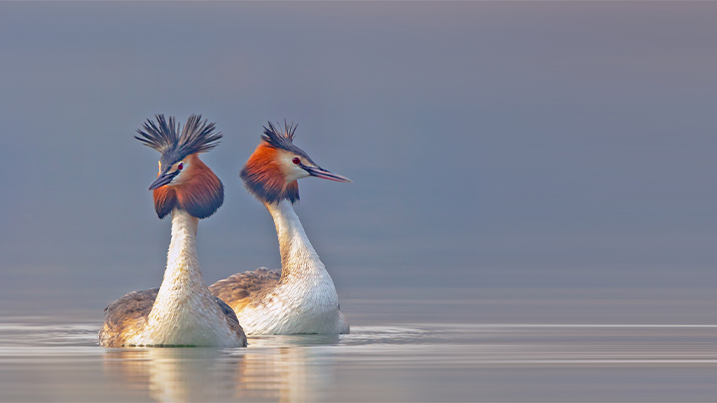
High contrast feathering, statement ‘hair’ styles and funky dance moves, Great crested grebes are some of the most easily recognised birds to see at lakes across the country.
The largest and most often seen grebe has been described as the punk rocker of birds with its dramatic head feathering giving the impression it’s wearing eyeliner and has distinct dyed hair. You’ll often see them suddenly diving beneath the surface, disappearing from view momentarily before reappearing gracefully but they’re not just hunting for small fish and insects through doing this, but avoiding predators as well. They are slightly awkward flyers but swim elegantly preferring to escape to the safety of the underwater world to make their getaway.
As the UK warms up in early spring, so does the lake dancefloor. great crested grebe courtship is one of the most iconic sights in the UK nature calendar, the sight of two partners coming together to woo each other is completely beguiling/. Having caught each other’s eyes and paired up at their wintering grounds, they start to build a solid relationship base through good communication. Their frequent noisy, croaking calls cut through the still lake air, helping them not just keep in contact, but to also ward off other grebes that may have had their eyes on this particular territory. A short while after the first visual cues begin, spotting one another across the lake they will turn to face each other, holding their necks high, straight up while keeping eye contact. Then, sometimes together, sometimes in turn, they start to shake their heads from side to side, helping their impressive head plumes catch the spring sunlight. As these movements grow in extravagance, they often flick the feathers on their backs in enthusiasm, in a sign of respect also known as bob-preening.
The next test of the partners relationship comes when one partner will dive beneath the surface to reappear within the other’s personal space, its neck arched downwards, eagerly hoping to see positive signs that they’re not about to be rebuffed. A response of ruffling feathers and half opened wings signals satisfaction and defuses any lingering tensions between partners before they move into the iconic climax, the weed ceremony. After a few more head shakes and bob-preens the birds will part, having seemingly finished their manoeuvres. Diving beneath the surface once more, they each search the lake floor for vegetative decorations before resurfacing for one final movement. Rushing to meet one another as close as physically possible, their heads rise to bring themselves breast-to-breast as high out of the water as they can be without leaving it. Webbed feet frantically move side to side to prevent sinking as they swish the reed jewellery from side to side in a final burst of energy before returning to more tranquil behaviour. It’s unusual for birds to be quite so open in their private moments; take the chance to see this enchanting display while you can.
Dragonflies
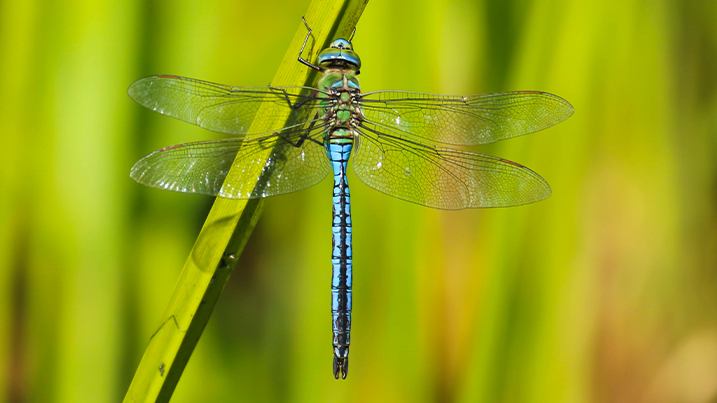
The colourful, aerodynamic heralds of warmer weather, dragonflies can be easy to spot, but keeping track of them is much more difficult.
On warm sunny days throughout late spring and summer you can see all manner of dragonflies over ponds and the edges of larger water bodies. Beating their wings around 30 times per second it would be easy to assume that dragonflies are rapid fliers, but many insects can fly far faster than them. What makes dragonflies special is the control that they have over their flight. Being able to fly backwards and upside down are their party tricks, but what really draws your eyes when seeing dragonflies is the stillness in which they hang in the air. Like a helicopter they seemingly stop still mid-flight, surveying their surroundings with those incredible eyes, on the hunt for their next meal.
Peeling off like a fighter jet when prey is spotted, they turn and twist to catch unknowing insects mid-air. A key part of what makes them voracious hunters is their ability to predict exactly where fast-moving prey will be rather than aiming at where they are, showing brain function beyond what many people expect of insects. So effective is this perfect harmony of eyes, brain, and wings that dragonflies catch approximately 95% of their targets. A fascinating blend of beauty and technical brilliance, watching dragonflies could be your most rewarding experience this year.
Lapwing
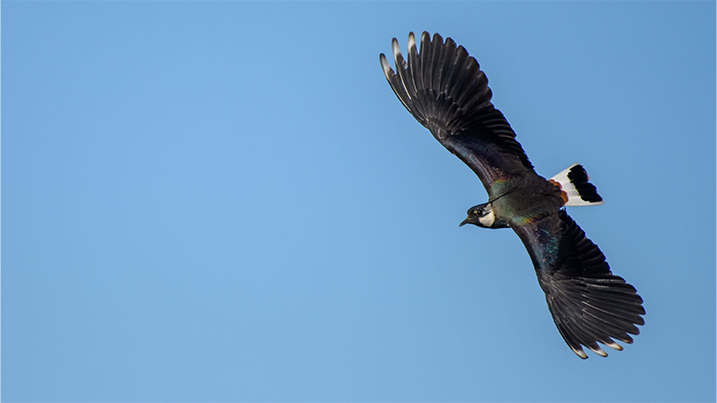
Iridescent feathers, charismatic calls, unique flying patterns, lapwings are some of the most charming birds but are so much more than just a pretty face.
There’s something in a name. Lapwings are also known as peewits as an onomatopoeic description of their display calls that on calm days you can hear cutting through the chatter of other birds, passing information between their flock. A group of lapwings even has a fascinating name, a ‘deceit’, being so called because of a sometimes-seen trick of adult birds to feign injuries to lure predators away from their nests. While their common name describes their distinctive flight pattern. Lapwings have broad, rounded, black and white wings that beat slowly as they circle territories on the lookout for potential predators, giving them an immediately recognisable flight amongst other birds which share their territory.
Being a relatively social species, lapwings are often found amongst other birds meaning that watching them is a real treat for all the senses. Closing your eyes for a moment to hear the cacophony of calls and rustle of wind and picking out that distinctive high-pitched peewit call distinct above the rest is a wondrous experience. Connecting with nature on a different level fills the soul. Take it all in at one of our sites.
WWT has 10 sites across the UK and at every one of them you can take in most if not all of these experiences amongst so many more. BBC Wild Isles has put a magnifying glass to the amazing wildlife spectacles you can experience right here, take the chance to connect with nature and experience them for yourselves by visiting soon.
Plan your visit


